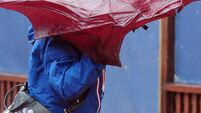Teeming bird life surprises visitors
They hadn’t believed that Ireland had sun. Again and again, they’d waved our protestations away and said they’d come to visit us “next year”. Over a decade “next year” began to sound like ‘mañana’, a time that never comes.
But this year, finally they arrived. We had told them that May and June were the best months — they have been, for the last five years. But now, in 2011, we had April in June perhaps because we’d had June in April. However, when they arrived, the sun obligingly shone and they got five days during which they saw the legendary Irish rain only once and then it wasn’t a downpour, only “the mist becoming rain”.













